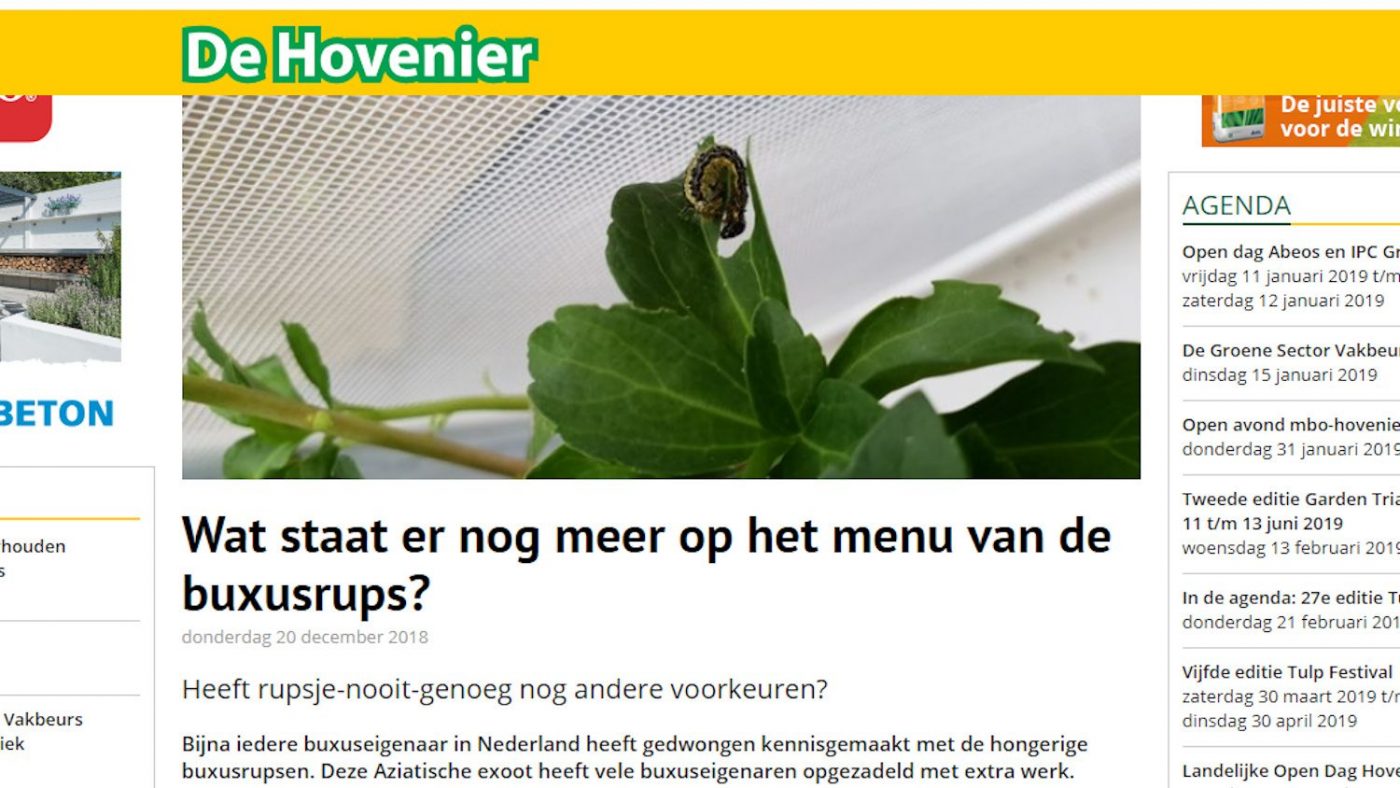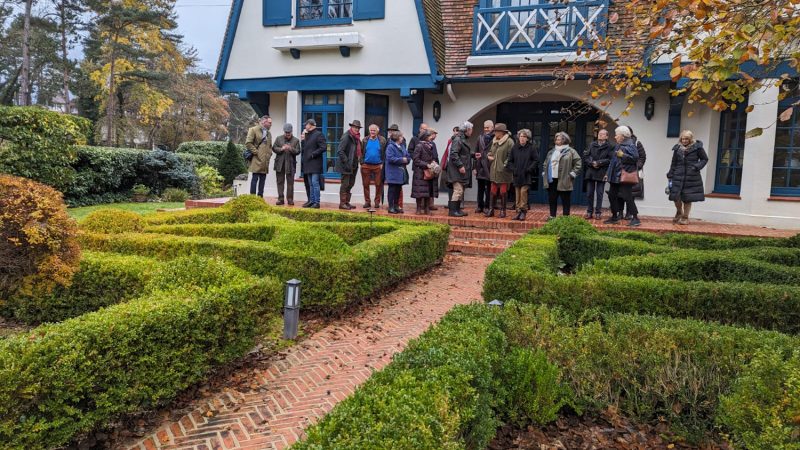Box Tree Caterpillars don’t just eat Buxus!
Its been reported in the Netherlands based green horticulture website De Hovenier that research by Eline Arts (an intern at Vlinderstichting – The Butterfly Foundation) has found that box tree caterpillars are able to eat and continue there reproductive cycle on a shrub other than Buxus. Six different shrubs were used in the trial, Buxus, Japanese Holly (Ilex crenata), Dwarf (Cotoneaster), Wild Privet (Ligustrum vulgare), Pachysandra terminalis (Japanese spurge) and the Japanese cardinal\’s cap (Euonymus fortunei).
The moths and caterpillars were placed in enclosures with each of the six shrubs and the life cycle observed and recorded. Not surprisingly , the Buxus suffered the most as this is the preferred option for the Cydalima perspectalis. For Ilex crenata, Dwarf Cotoneaster & Wild Privet the caterpillars did not eat the leaves and the moths didn\’t reproduce, though eggs were laid on the Wild Privet but they didn\’t hatch into viable caterpillars.
The leaves of Euonymus & Pachysandra however were both eaten and whilst the Euonymus didn\’t appear to support the reproductive cycle, the Pachysandra did. As Japanese spurge is part of the Buxaceae family this maybe isn\’t a surprise (it has genetic links to Buxus), but it is worrying that Euonymus is also susceptible to being eaten given it is being sold and used as a replacement for Buxus. However, it should be remembered that the caterpillars & moths most definitely prefer Buxus so the likelihood of serious issue with other plants is low. In the case of Euonymus it would need to be in physical contact with an infected Buxus plant for the caterpillars to do damage.
The Butterfly Foundation has also raised concerns in the Netherlands that pesticides and insecticides are potentially killing some small birds like blue tits etc. Young birds in three different cities have been found dead with high levels of chemicals in their bodies. This is thought to be caused by adults feeding their young caterpillars that have been sprayed to try and control the box tree moths/caterpillars.
Other research carried out in the Rose Garden of Val de Marne during 2016/7 showed that the mortality of the young birds is not increased by a high level of the natural alkaloids found in Buxus plants ingested by the caterpillars which are then caught by birds and fed to their young. In the 20 nesting boxes installed in the garden, no dead birds were found in the boxes even though the young had been fed a significant diet of box tree caterpillars. The same report also confirmed that Bacillus thuringiensis based sprays were compatible for use where birds were being encouraged to nest.




